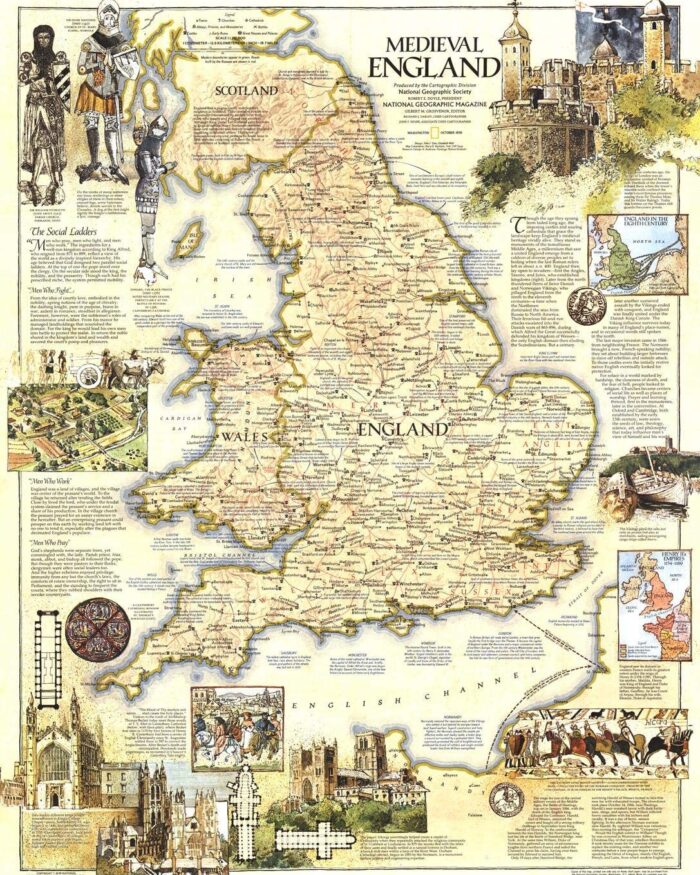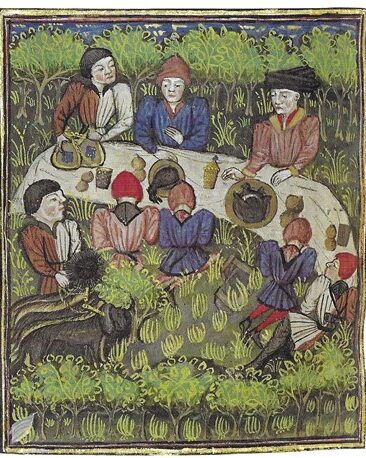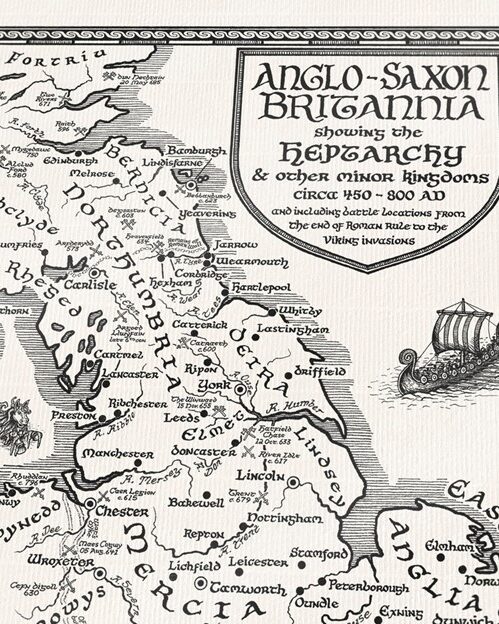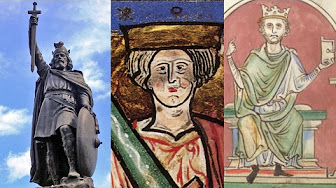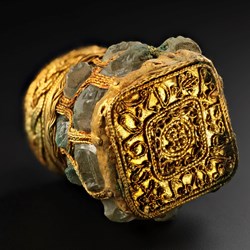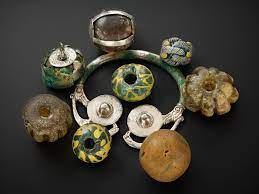Æthelwulf: Fighter Against the Vikings
Æthelwulf, birth c. 795/crowned King of Wessex, 839 at age 44/death 858 at age 63/spouse, Osburh married in 830 and Judith of Flanders married in 856
House: Wessex/Father, Egbert, King of Wessex/Mother, name unknown
Children: Æthelstan, King of Kent (839); Æthelswith, Queen of Mercia; Æthelbald, King of Wessex (858-860); Æthelberht, King of Wessex (860-865); Æthelred I, King of Wessex (865-871); Alfred the Great (871-899)
Reign: 839-855
In the TV series Vikings, Æthelwulf gets a bad rap. His father loves him, but not half as much as he loves Ragnar Lothbrok, King of the Vikings, Ragnar’s first wife Lagertha, Earl and shield maiden, and Ragnar’s counselor, Æthelstan. Æthelwulf is forced by his father to fight with and defend Ragnar’s warriors even though none of them like or trust him. When he’s away fighting, his wife Judith shares a medieval hot tub with Æthelstan, her father, and Lagertha, ultimately beginning an affair with Æthelstan.

Moe Dunford played Aethelwulf, King of Wessex in Vikings
(Image: AMAZON/HISTORY)
Source: Express
Primary sources of information about Æthelwulf, King of Wessex, tell a different story. These sources are the Anglo-Saxon Chronicle (see Vortigern: Myth and Legend), historical accounts, and surviving charters, along with genealogical records and later biographical works. The Anglo-Saxon Chronicle provides key insights into Æthelwulf’s reign, including details about his battles, Viking invasions during his reign, and his religious piety. Later historical accounts and biographies, such as those found in the Oxford Dictionary of National Biography and the Dictionary of National Biography, offer further context and analysis of his life and reign. The earliest surviving charter of a king of Wessex is a grant by King Æthelwulf, dated 28 May 843 (Stowe Charter 17), which provides insights into his governance and land ownership. Records of his lineage and family, such as those found in the Anglo-Saxon Chronicle and other genealogical sources, help us understand his place in the Wessex royal family. Other sources include accounts from the Annals of St. Neots and other medieval chronicles, as well as modern historical analyses and biographies.
The image below is of King Æthelwulf (in the center) from a genealogical roll chronicle produced in the reign of Edward I (1272-1307). He is shown against a shiny gold background, with his left hand on his heart. The French text beside him focuses on the gifts of money he gave to the Pope. Beside him is a man on stilts playing a pipe with an animal head. This is a leaf that has been detached from Cotton MS Otho B XI, one of the manuscripts of the Anglo-Saxon Chronicle now housed in the British Library, London. You can visit the British Library in London and request to view specific manuscripts.

Information taken from the Anglo-Saxon Chronicle, historical accounts, charters, and genealogical records indicate that Æthelwulf was a fierce warrior who fought with his father King Egbert against the increasing Viking raids both on the coast and inland. He arranged the marriage of his daughter Æthelswith to Mercian King Burgred in 853, which led to closer cooperation between the kingdoms of Wessex and Mercia. Neither kingdom relinquished their independence but helped each other out militarily and economically. There is evidence that the two kingdoms started up what is known as a joint coinage system, the significance of which is discussed in Currency and Alliances: History and Coinage of Southern England in the Ninth Century.
Æthelwulf and his first wife Osburh had six sons; all but one of them given names beginning with Æthel (meaning ‘noble’). He married a second time, negotiating an alliance with France by marrying Judith, the daughter of the Carolingian king of West Francia, known as Charles the Bald. It is not known if Osburh had died or was simply cast aside when Æthelwulf negotiated this more important marriage alliance. Æthelwulf and Judith were married on October 1, 856. A consecration ceremony at the royal palace of Verberie-sur-Oise in northern France gave Judith the title of queen, making her the first crowned queen of England. Charles had won from Æthelwulf a promise that Judith would be crowned queen upon their marriage; earlier wives of Saxon kings were known quite simply as the “king’s wife” rather than carrying a royal title of their own. Two generations later, the queen’s consecration was made standard liturgy in the Church of England.

Source: Biography of Judith of France
In 851, Æthelwulf and his son Æthelbald (with Osburh) were a power couple that inflicted a number of defeats against the Vikings. After success at the battle of Aclea, there was a lull in Viking raids. During that time, Æthelwulf went on pilgrimage to Rome and appointed Æthelbald King of Wessex and Æthelberht, his next oldest son, King of Kent, which had been conquered by Wessex thirty years earlier. When Aethelwulf returned, his son Æthelbald refused to give up the crown. To avoid a civil war, most historians believe that Æthelbald continued to be King of Wessex while Æthelberht gave up Kent to his father. When Æthelwulf died in 858, Æthelbald continued as King of Wessex while his brother regained his kingship of Kent.

Map of Southern Britain during the 9th Century
Licensed under the Creative Commons Attribution 4.0 International license.

